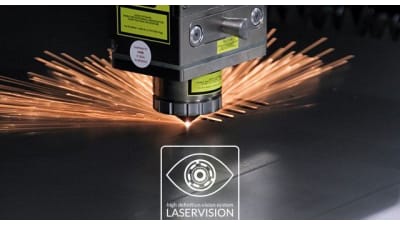Sheet metal laser cutting optimization: coil-fed laser vs. traditional laser

This article will show how coil fed laser cutting systems are more efficient in different application ensuring a better material optimization than traditional systems using standard sheets.
The following case history compares in detail the same application of sheet metal production processed by traditional laser cutting system or a coil-fed production system and in the end we will analyze both the material utilization and the final amount of scrap.
Coil-fed sheet metal cutting
In the last five years, coil fed punching systems and laser cutting systems are enjoying an increasing significant success. The reasons are multiple: they allow for a simple automation of the process, the cycle time is not dependent on the operator’s skill, the cycle time for production is faster and, above all, the processing from coil allows for an optimized nesting with very high material utilization. Many companies, though, acknowledge this huge advantage only after the purchase of the machine, when they compare the reduced scrap amount with the scrap generated by the traditional sheet fed processes.
We have already calculated the consequent savings in labour and material in a previous case study, regarding coil fed punch/laser machines. This new article analyzes the improvements in the material utilization in a different case: the company is working in the HVAC field, and a particular casing requires multiple parts to be cut as an “assembly kit” from galvanized steel.
Traditional nesting on sheets
Today, the working cycle requires to cut the parts from 12 sheets with dimensions 3660x1525mm.
As we can see from the pictures hereunder, in some of the sheets the amount of scrap is over 30% . The material is 1,5mm galvanized steel: the total amount of material to produce the parts can be calculated with the below table. As it is evident from the images, the production of long parts and panels obliges our customer to position the long parts and panels first, and then try to optimize the sheet usage by positioning other smaller parts.
- Machines for sheet metal •
- Other machines for sheet metal processing

